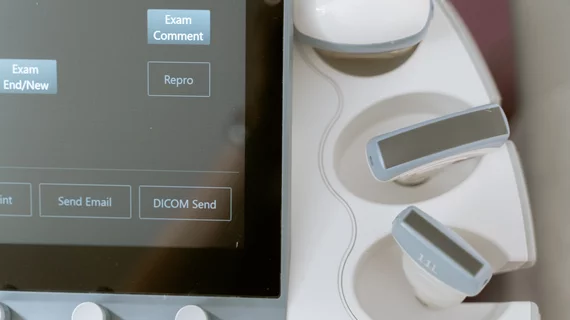Considerations for supplemental imaging should extend beyond breast density, analysis suggests
Although the need for supplemental imaging in women with dense breasts has been a hot topic among the imaging community recently, new data suggest that considerations for supplemental exams should extend well beyond breast density.
Experts recently compared tens of thousands of supplemental breast ultrasounds alongside more than 800,000 screening mammograms that did not include additional imaging evaluations to better understand who is at greatest risk of mammography screening failure. After using Breast Cancer Surveillance Consortium (BCSC) prediction models to determine individuals' risk of interval invasive cancer and advanced cancer between the groups, the team found that only a modest proportion of women with dense breasts were at higher risk of mammography screening failure, despite being the primary targets for supplemental US recommendations.
This prompted the team to suggest that additional risk factors outside of breast density should hold more weight when considering who needs supplemental screening in the future.
“In addition to breast density, other breast cancer risk factors (e.g., family history of breast cancer, prior benign breast disease diagnosis, obesity) have been shown to be associated with likelihood of a mammography screening failure,” corresponding author of the newly published analysis Brian Sprague, PhD, of the University of Vermont Cancer Center, and colleagues noted. “In the current clinical setting of variable referrals for ultrasound screening, it is unclear how closely use of ultrasound screening is associated with a woman's risk of mammography screening failures.”
Exams included in the analysis took place from 2014 to 2020 at 32 U.S. imaging facilities within three regional registries of the BCSC. Of the 38,166 supplemental US exams included, 95.3% were performed in women with dense breasts; this was the case in 41.8% of the 825,360 screening mammograms without supplemental screening.
Of the women with dense breasts, 23.7% that completed US exams were determined to have high interval invasive breast cancer risk; that’s compared to 18.5% of those who underwent screening mammograms alone.
Although the screening failure risks were similar among both groups of women, those who had dense breasts were targeted significantly more for supplemental US. And many of the women who had heightened risks of screening failure did not complete the added exams, which could pose the risk of having a malignancy missed, the group suggested.
Further research on the long-term outcomes associated with supplemental US is needed. But in the interim they suggested that risk assessments used when considering these added exams should not focus on breast density alone as a clinical indicator.
The study abstract is available in Cancer.

